Trekking in the Himalayas in Nepal is not the privilege of trained climbers. Ordinary people from any part of the world can enjoy hiking if well-prepared. This comprehensive guide for trekking is based on the advice of my friend Bharat, a mountain guide in Nepal, who has 20 years of experience with hiking with tourists as a porter or as a guide.
- Why is Nepal one of the best places for trekking?
- What is the best season for hiking?
- How to get fit?
- How can you avoid having altitude sickness?
- Important tips for your first trekking in Nepal
- Accommodation
- How to prepare with food for the trekking
- The difficulties you may face
- Compulsory permits and fees
- Solo trekking or organized package tour
- What hiking equipment do you need?
Why is Nepal one of the best places for trekking?
No other country offers such a wide variety of trails with a view of the world’s highest mountain range as Nepal. Whether you are a beginner or a professional climber, have only a few days or a month, you can find a suitable trail from easy to difficult levels.
There are 14 peaks above 8000 meters, and 8 of them are located in Nepal (Everest, Kanchenjunga, Lhotse, Makalu, Choyu, Dhaulagiri, Manaslu, and Annapurna).
Nepal is one of the poorest countries in the world. Approximately one-fourth of the people live under the poverty line. The civil war (1996-2006) between the government forces and the Maoist guerillas left thousands of people dead. The country has been victim of natural disasters and has still not fully recovered from the aftermath of the disastrous earthquake in 2015. Tourism is one of the main sources of income. If you come to spend money in Nepal, you will help the local people.
While enjoying the proximity to the snow-covered mountains, you will encounter local ethnic groups and get a rewarding cultural experience at the same time.
Apart from the amazing views of the Himalayas, trekking in Nepal is mostly unforgettable because of their people. Nepali are joyful, talkative, and extremely friendly. They are happy to take photos with you and openly share everything about their customs. And they are pleased to teach how to make Nepali food.
Teahouses are special mountain lodges in Nepal, where tourists can sleep in comfortable rooms, meet other travelers and get almost the same variety of food (Chinese, Nepali, Western) as in the bigger cities (Katmandu or Pokhara).
All tourists arrive in Nepal’s capital, Kathmandu, located at 1400 meters. When the new airport in Pokhara is ready, it will get a lot easier for trekkers to fly directly to the entry point of the Annapurna region. Since all treks start with at least a day of acclimatization, you have time to discover the amazing pagoda-style temples, stupas, and palaces. Pashupatinath, Boudha, and Swayambhu are the three most important religious pilgrimage sites in the capital and are therefore easily to connect for a visit.
Read more about the best short and long treks in Nepal here
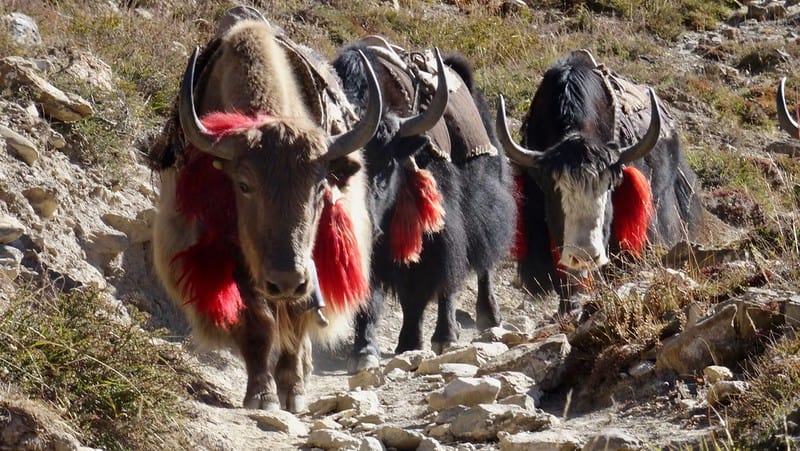
What is the best season for hiking?
7 months are the best time to go trekking in Nepal: September, October, November, December, March, April, and May. Out of that, September-November and March and April are considered as the best periods for hiking.
In autumn (September-November), there is less precipitation, and the weather is stable. Just after the monsoon, the view becomes completely clear with the best panorama of the Himalayas.
In spring (March-May), the temperature is higher, and days are longer. Rhododendrons are blossoming in purple in April and the beginning of May. This gives an extra beauty to the trails.
Monsoon time (June-August) is not the best time to go hiking. You have fewer options because the visibility is less clear, the trails turn muddy and slippery, and there is a bigger chance for landslides.
But some trails are ideal during monsoon too. If you want to stay dry and still do trekking in June and July, you can choose either the Dolpo or the Mustang Treks. Thanks to their special location, these two places in Nepal enjoy a dry climate and are one of the most beautiful treks in Nepal.
Trekking in Nepal during peak season: The popular hiking trails are more crowded, but you can be sure that all lodges are open and well-equipped to welcome tourists.
How to get fit?
Many people think they must be extraordinarily sporty and trained to complete a trek in the Himalayas. But the truth is that even if practicing sports is not part of your daily routine, you can easily train yourself for the Everest Base Camp or other popular trekking in Nepal.
A six-year-old child or an 80-year-old person could also complete the Everest Base Camp tour.
What Bharat, the mountain guide suggests, is that three months before the trekking, you should start to walk mornings or evenings 30-60 minutes twice a week. Besides walking, you can start jogging and running at slow or medium speed. At half time you should switch to climb stairs to get used to going up and down. After that, you will be ready to reach the Everest Base Camp.
If you come from a flat country, there is no way you can prepare for the high altitude circumstances. But no worries. After arriving in Kathmandu, you are advised to spend 1-2 days with acclimatization before you start trekking.
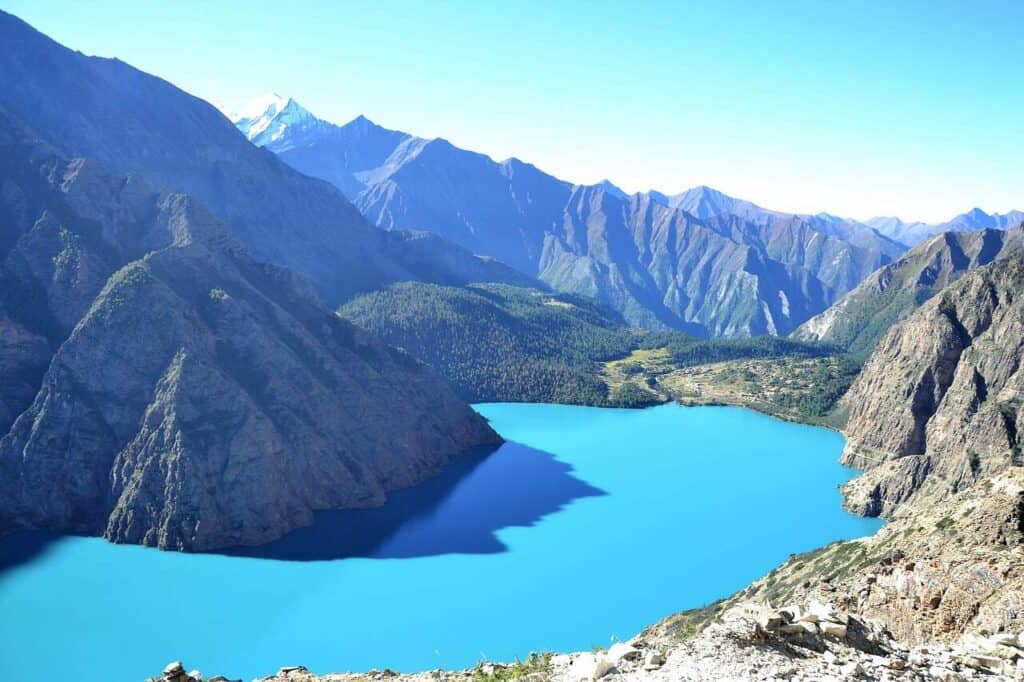
How can you avoid having altitude sickness?
There is no way to foretell how each person will react to the high altitude regardless of age and sex. It does not even matter how fit you are.
Experienced mountain guides say the best way to adjust to high altitude is to:
- “Climb high and sleep low”. When you reach your camp that is located over 3000 meters, you should continue to climb some hundred meters more and return to the lodge;
- “Walk slowly and drink enough water! When somebody has altitude sickness, he must drink water. If you are on a level that is 2000 meters higher than Kathmandu, you must drink at least 2 ½ liters a day. By 3000 meters 3 ½ liters, by 4000 meters 4 ½ liters, and so on. This is very important- says Bharat, who also gives lectures for future mountain guides.
Important tips for your first trekking in Nepal
- Book your accommodation in the Thamel district in Kathmandu. The Thamel district is a tourist hub with cheap to luxurious hotels, bars, nightclubs, live music, yoga, meditation classes, and money exchange offices. Within only a square kilometer, you find Chinese, Italian, Japanese, Thai, Indian, and even Mexican restaurants. If you want to book on the spot, hundreds of trekking agencies offer tour packages and provide information.
- Spend 1-2 days with acclimatization in Kathmandu.
- Never come with brand new boots! Do the exercises before the trekking in the same boots you will wear for the trekking, even if you have bought the best hiking shoes from the best brand.
- Choose proper travel insurance that applies to high altitude trekking and includes helicopter rescue. Anything can happen in the mountains. Sometimes the most trained hikers need to be urgently taken to a lower altitude by a helicopter. World Nomads is a popular and reliable choice.
- Book your tour package if possible from home.
Accommodation
Teahouses are special mountain lodges in Nepal available along the most popular treks. In teahouses, hikers can sleep in comfortable rooms, meet other travelers, and get almost the same variety of food (Chinese, Nepali, Western) as in the bigger cities (Katmandu or Pokhara).
The teahouses of bigger places, like Namche Bazaar and Lukla, offer rooms with private bathrooms. But in other places, you have to share the bathroom with others. There is one shower for a lodge with a maximum of 20 rooms and two showers if there are more than 20 rooms. It means that you have to wait for your turn. In peak season, so much that you probably decide to skip that. The Everest region is the only place where you have to pay an extra fee for a hot shower.
There are normally two people in one room. But if you take one of the popular treks in high season, there is no guarantee that you get a single room. The options may be limited, and you have to share a dormitory (the dining room converted after dinner) with other trekkers.
If you hike with a guide, he will call the lodge to book the best possible option. But even then, you cannot take it for granted. They can provide you a single or double room in 10-15% of the cases.
The rooms are usually cheap. It costs 3-4$ per night. But you have to eat in the restaurant of the lodge in return.
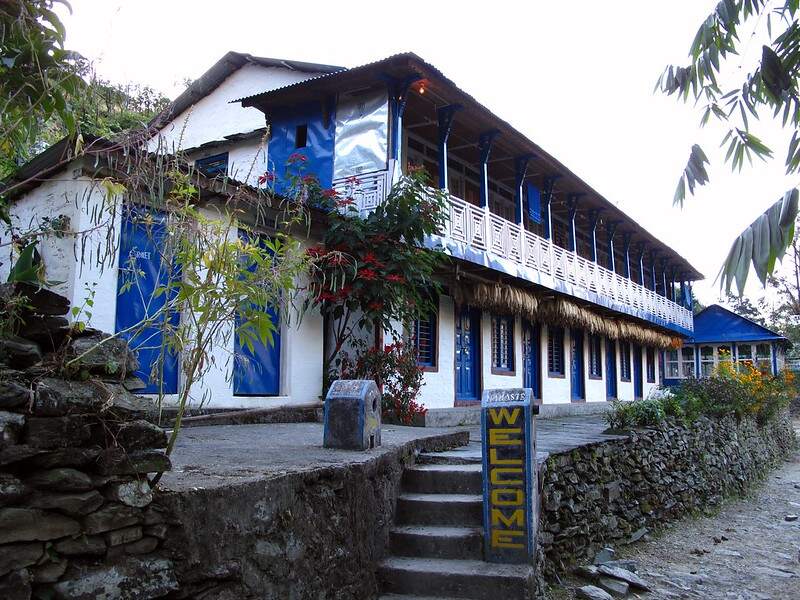
How to prepare with food for the trekking
As mentioned before, at the popular Himalaya trails you will find comfortable teahouses and lodges. You can buy drinks, chocolate, and nearly anything else you need here. Though, everything gets more expensive with the altitude.
You better avoid eating meat during your stay in Nepal. In the lack of refrigerators, there is a good chance that it is not fresh.
Dal Bhat (rice with lentil) is the most common Nepali food that the locals eat twice a day. This is fresh and healthy, and you should also try that.
The difficulties you may face
- Do not count on the Internet in the mountains
The Internet is now available even in the most remote parts of the world, but it is rare to get a signal in the Himalayas. During your Everest Base Camp trekking, you can have access to the Internet half of the time, but even then, it is expensive (10$ for 2 hours). Other trails do not have such facilities at all.
So be prepared not to have contact with your family and friends during the Trek.
- Forget about having a shower every day
If you choose some remote trekking trail, you need to camp. But even if you opt for popular treks, you will not always be able to have a shower. During the peak season in Poon Hill, Annapurna, etc., the waiting time for a shower can be so long that you just skip it.
- Local people will ask for money and medicine
Do not be surprised if local villagers ask for medicine and medical treatment. For some reason, they think that all white people are qualified doctors. They often ask for money too. But do not take it too seriously. Just say that you are not a doctor and give a smile. Children ask for candy, chocolate, and pens. They know the pens of the tourists are of good quality. You can bring some to make the locals happy, but of course, nobody expects you to carry enough pens for 3 weeks.
- Rapid weather changes
The weather in Nepal can change within half a day or sometimes within even 6 hours. It can also happen that you must wait for 2-3 days for good weather. The weather is nice and stable basically in the period from October to January. Just calculate some extra days for your trekking. There can be unexpected events.
- The political situation in Nepal is unstable
Protests and strikes can paralyze daily life at any time. The civil war (1996-2006) was one of the most decisive events of the country’s modern history.
In 1996, the Maoists declared war against the Nepalese government and started to occupy parts of the country. Children were abducted to enlist in their military groups, and several people died in the clashes between the Maoists and government forces. But even at that time, tourists were coming to Nepal, and yes, Nepal is safe for trekking!
Nepal was a constitutional monarchy until 28th May 2008, when it was declared the Federal Democratic Republic.
During the last general elections in 2017, the Nepal Communist Party (NCP) won with a big majority. The newly elected Prime Minister Khadga Prasad Sharma Oli allied with the former Maoist rebels under the unified Nepal Communist Party.
But due to severe internal conflicts with the former Maoists, Prime Minister Oli decided on 20th December 2020 to dissolve the Parliament and schedule the elections for 30th April and 10th May. As a response, 10 000 people went to the streets to press the Prime Minister to revoke his unconstitutional decision.
Besides, the Nepali people are also unsatisfied with the highly corrupt government. The inefficient reaction to the Coronavirus outbreak raised people’s anger further.
Even when it comes to strikes or protests, they let the green number plate (tourist) vehicles pass without a problem. But it is still better to calculate some extra time for your trekking because of the actual political situation.
Compulsory permits and fees
Every trekker in Nepal needs a TIMS hiking permit (Trekking Information Management System) issued by the TAAN (Trekking Agency Associations of Nepal). You can get your TIMS card and pay your park fees at the Nepal Tourism Board offices in Kathmandu or Pokhara before your trek. It costs around $20 per person and is valid for a month. TAAN has offices in Kathmandu and Pokhara, where you can apply for the permit.
The TIMs card enables to track all tourists who are in the Himalayas at that moment. Trekkers have to present the TIMS card at the checkpoints.
The climbing permit is different. The Nepal Mountaineering Organization issues the climbing permits for 33 special peaks. All of them are 6000 to 7000 meters high. For peaks over 7000 and 8000 meters, the Nepal Tourism Board or the Ministry of Home Office will issue the permits.
In addition to the TIMs card, you will either need to pay a nature park or a conservation fee.
The ACAP (Annapurna Conservation Area Project) costs 3,300 NPR (30$) for a Trek in the Annapurna region. At other places, you will need to pay a national park fee.
For the few restricted areas (Dolpo, Mustang and Manaslu), a third, special permit is also needed.
Solo trekking or organized package tour
When you plan your trekking to Nepal, you probably hesitate to hike independently or with an organized package tour.
You are not obliged to hire a guide for the popular Treks in the Annapurna and Everest region. But in the restricted treks like Dolpo or Mustang trail, you must hire a guide!
During the peak season, you will not feel alone. The signs are clear and you can follow the other trekkers too. If nothing special happens, you are lucky with the weather too and you will not feel the necessity to hire a guide. But going on a long hiking can involve several mishaps. And then you may regret having spared on a guide.
More and more travelers choose to go to high-altitude places. Nepal alone receives more than one hundred thousand trekkers from around the world every year. It is easy to under-estimate the dangers of the mountains, like altitude sickness and others. And deaths from these conditions are all the more tragic because they are entirely preventable.
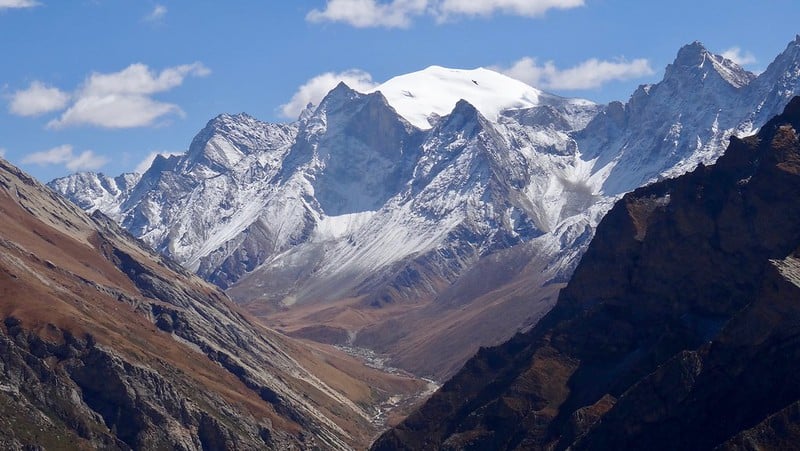
In Nepal, you can hire porter-guides and guides. Porter-guides are carrying your bag, arrange your accommodation, and make sure everything goes smoothly during your trekking.
Hiring a guide will obviously add to your budget. On the other hand, you should also keep in mind the possible consequences of not taking one. Even though many tourists are lost every year in the Himalayas, more and more individuals decide to go trekking solo.
It is also advisable to hire a guide and a porter for even more popular treks, because if anything happens like a sprained ankle, he is there to help.
There are hundreds of trekking agencies in Nepal to choose from. You have the following options to go on trekking in Nepal:
1. Look for a reliable trekking agency on the spot – but it can be stressful
You can book your flight and accommodation for the first days in Kathmandu and look for a reliable trekking agency on the spot. Most hotels have contacts, and they can organize a guide for you. However, it involves several risks. The guides organized by hotel managers are probably cheaper, but it is possible that they are not experienced and do not have insurance. If something happens to them, your trip can easily be destroyed. It is important to hire a professional, who can guarantee your safety in case of avalanches and other unexpected events.
Then it is better to visit a couple of random agencies in Kathmandu (in Thamel district), compare their offers, and listen to your guts.
2. Book a tour package from home – advisable
If you do not have much experience in hiking in Nepal, it is better and more relaxing to book a tour package through a trekking agency from home to make sure everything goes according to your plans. The agency will arrange everything for you. It provides insurance for all the staff, and in case of an emergency, they will act quickly.
2.1 How to choose a local agency?
Many trekking agencies were founded by experienced mountain guides. They grew up in the mountains and are experts in the Himalayas. They know the trails very well and know how to react to rapid weather changes and other circumstances. Choosing such a company is the best choice for you.
There are plenty of reliable trekking companies nowadays. Feedback on TripAdvisor and other travel forums will give you an idea about how recommended they are.
A smaller, but reliable company I can recommend is Nature Explore Trek.
2.2 The pros of booking a package through a trekking agency
- You do not need to care about the preparation. The agency will handle all the logistics and all your trekking permits. You spare a lot of time and stress with that.
- Every flight, bus and road trip, sightseeing in Kathmandu will also be arranged by the agency.
- They provide experienced guides and porters.
2.3 Cost of the trekking package
The 2 weeks Everest Base Camp tour costs normally 1600 USD, which includes:
- Kathmandu- Lukla domestic flight back and forth
- Accommodation in teahouses with 3 meals a day
- 3 nights in a 3-star hotel
- Kathmandu sightseeing
- Costs of porter and guide for the whole tour
3. Book only a guide or/and porter through a trekking agency
3.1 The pros of hiring a guide through a trekking agency:
- A guide can share a lot of information about local life, history, and culture. He passed an exam to become a licensed guide, approved by the Tourism Board of Nepal.
- The guide speaks the local language, and you will not have any communication problems. When I do not speak the local language, I cannot get to know the country as deeply as I desire. But a native speaker helps you overcome that.
- It is also the guide’s duty to book your accommodation in advance and arrange your meals.
- If you have any health problems, he can give you a hand and arrange your immediate rescue.
- If wild animals attack you along the Trek, he can carry you to a safe zone on his back.
- Your guide can easily become your close friend that makes your trip unforgettable.
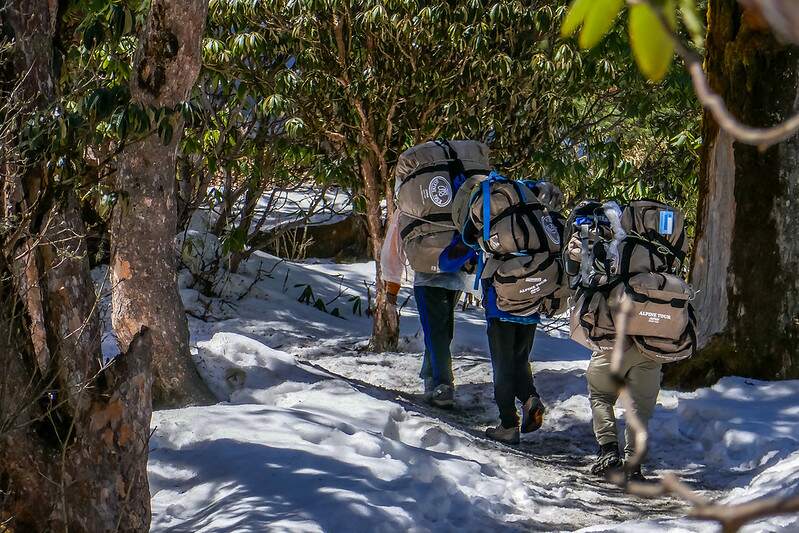
3.2 Hiring a female guide
If you are a solo female trekker or a group of women, you might feel more comfortable with female guides. Still not common, but there are female porters and guides as well. But they don’t go to high altitudes and complete fewer treks in a year. The „3 sister company” is well-known for training and employing female porters, thus giving them a chance for a better life. Women in Nepal are still expected to do housework and stay at home with the children. But some women want to become mountain guides. Many times the families do not let their daughters give up the traditional roles. Some are more open and let their daughter go hiking in the hope that they will return after having a family.
You can hire female porters for the Annapurna base camp, the Annapurna circuit, and the Mardi Himal trek. At higher altitudes, accommodation is a real problem for female porters.
You can choose female guides at these companies: https://www.3sistersadventuretrek.com/
3.3 Cost of hiring a guide and porter
Depending on the trekking, the guide costs 30-35$/day and the porter 15-20$/day.
Tips are not included in the package price, but please do not forget to tip the porters and guides at the end of the tour. In many countries, people working in tourism get a lower salary, and they highly depend on the tip they receive at the end of the tour. Porters have a demanding job.
Even if you decide not to hire a mountain guide, you should engage a porter. Porters carry all the stuff of tourists and are essential for your trekking.
Here you find all the information about hiring a porter for your trekking in Nepal.
What hiking equipment do you need?
You will need the following equipment for trekking in Nepal (based on the advice of a mountain guide in Nepal):
- down jacket
- half jacket
- sun cream
- sun hat
- sleeping bag (even if you sleep in teahouses along the popular treks you will need it for cleanliness and it can be cold too)
- Inner sleeping bag for more than a week trek
- hiking trousers (one pair for one week, 2 pairs for 2 weeks)
- thick hiking socks (more pairs because sometimes there is no time to dry)
- thin socks (minimum 2 pairs for a week-long hike)
- headlamp
- dry bag (5 to 7 liters)
- a backpack that your porter will carry- so please pack light
- flip-flops
- woolen hat
- trekking boots (not brand new)
- 1 pair of thick gloves
- 1 pair of thin gloves
- long T-shirt ( 2 for a week)
- Short T-shirt (2 for a week, 3 for 2 weeks. 4 for 3 weeks or more)
- 2 sweaters for a week, 4 for more than a week
- raincoat
- windproof trousers
- extra camera battery for more than a week-trek
- extra mobile battery for more than 2 weeks-trek
- swimming suit for the Tamang heritage, Langtang, Manaslu, Kangchenjunga. Makalu and Lower Dolpo trails
- medical kit (if necessary with medicine on doctor’s advice), otherwise the local trekking company will provide
- water purification tablet or liquid– 3 drops or one tablet in one-liter of water, and wait half an hour before drinking
Nature Explore Trek provides a down jacket and backpack for the hiking (to be returned after the Trek), a first aid kit, a company print T-shirt, and a trekking map as a gift, filtered water.
Buy or rent equipment in Nepal! Most tourists come to Nepal with their branded equipment. If you are not a regular hiker and do not want to invest hundreds of dollars in your outfit, you can buy or rent almost everything in Nepal.
Instead of spending 150-300$ in your country for a jacket, you can probably get a similar but unbranded jacket for only 50$. It has probably lower quality but is more than sufficient for the popular trekking trails in Nepal. There are plenty of hiking shops in Kathmandu to look for everything you need (trekking trousers, socks, gloves, sweaters, headlamps, sleeping bags).
To sum up all of the above, you should not be scared to set off hiking in the Himalayas even if you are not the fittest person in the world. Start to exercise some months before, spend time with acclimatization in Kathmandu and choose a shorter and easier trail if you are a real beginner. It is better to book your trekking package or at least your guide or porter through a Nepalese trekking agency before your trip. This will make your trip less stressful. They care about your safety, and a local guide can help you understand the local culture. You do not have to spend a fortune on branded clothes. You can get get most of the stuff cheaper in Nepal. A trek in the Himalayas is a physical and mental refreshment and the perfect way to break out of the daily robot.
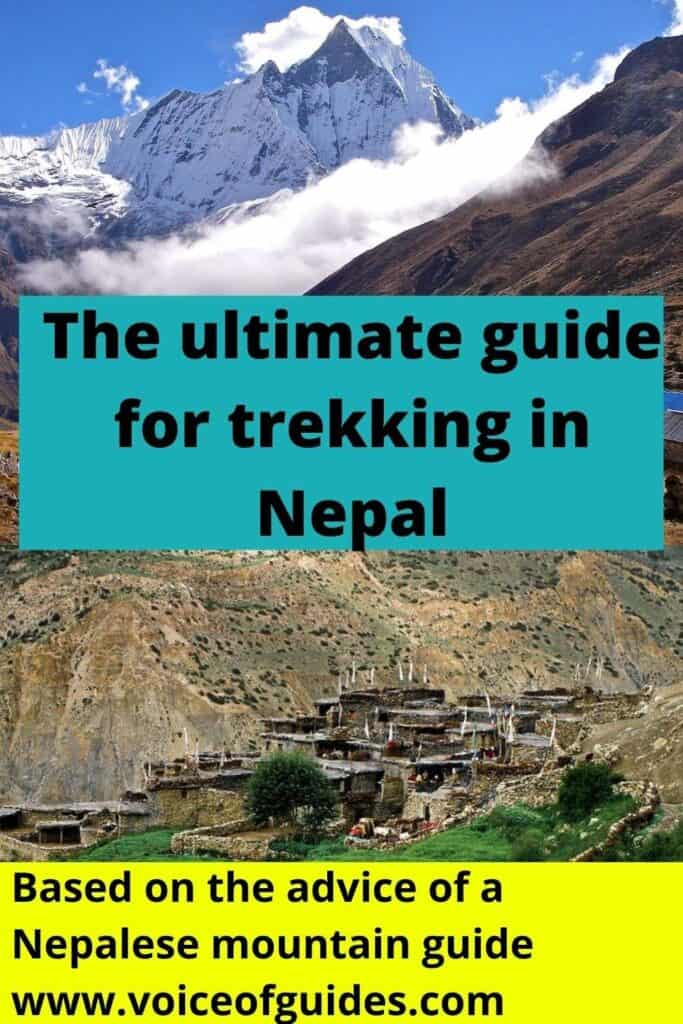

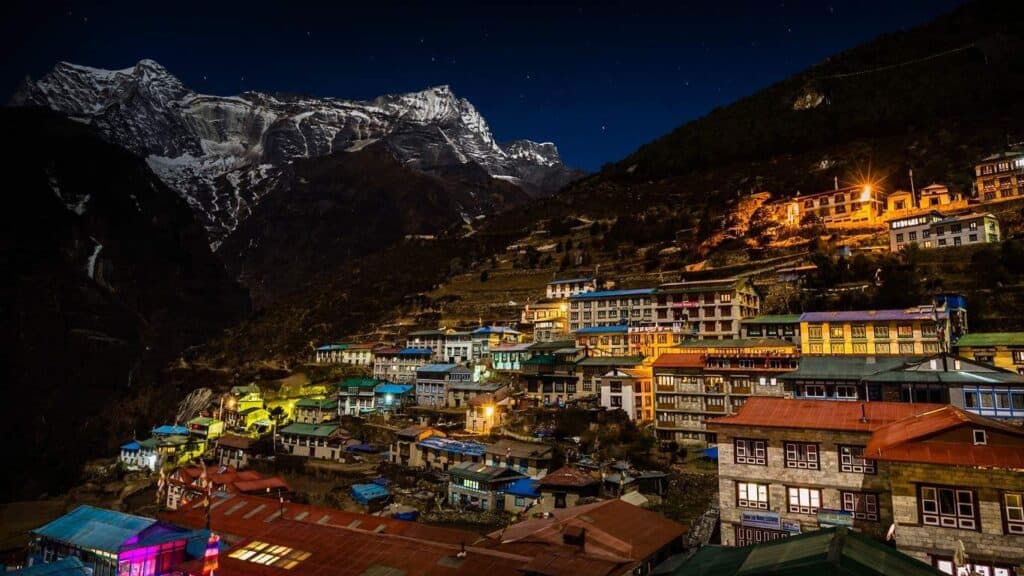

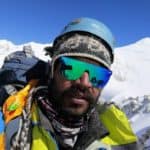
Pingback: The best short and long treks in Nepal | Voice of Guides
Pingback: Pikey Peak Trek: The best panorama of Mount Everest | Voice of Guides
Pingback: Annapurna Base Camp trekking | Voice of Guides
Pingback: Mardi Himal Trek: "The Hidden Paradise"- Far away from the touristic crowd but really close to the Himalayas | Voice of Guides
Pingback: Upper and Lower Dolpo trek: one of the most adventurous high-altitude trails in Nepal | Voice of Guides
Pingback: All you need to know about hiring a porter in Nepal | Voice of Guides
Pingback: The holy Kailash and Mansarovar lake tour: a spiritual and life-changing trek in Tibet | Voice of Guides